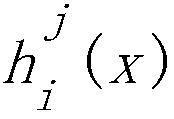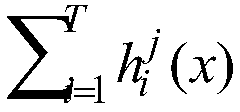A switching algorithm based on machine learning in a UDN
A machine learning and algorithm technology, applied in the field of handover algorithms based on machine learning, can solve the problem that the algorithm handover prediction cannot be equal, and achieve the effect of reducing unnecessary handover and reducing the average delay
- Summary
- Abstract
- Description
- Claims
- Application Information
AI Technical Summary
Problems solved by technology
Method used
Image
Examples
Embodiment Construction
[0020] The switching algorithm based on machine learning in the UDN of the present invention, such as figure 1 As shown, the switching algorithm includes the following steps:
[0021] Step A: Every time the mobile device needs to switch to a new micro cell, it first reports the characteristic information report of the location of the mobile device to the macro base station, and the macro base station discretizes the characteristic information.
[0022] Step B: Use four learners of machine learning decision tree prediction, neural network prediction, SVM prediction and random forest prediction to train the discretized feature information data to obtain each training model; place the obtained models in the macro base station, and The obtained training models are used to respectively predict the micro cell to which the mobile device will handover, and obtain various prediction results.
[0023] The combination strategy of using different learners to integrate can often get bette...
PUM
 Login to View More
Login to View More Abstract
Description
Claims
Application Information
 Login to View More
Login to View More - R&D
- Intellectual Property
- Life Sciences
- Materials
- Tech Scout
- Unparalleled Data Quality
- Higher Quality Content
- 60% Fewer Hallucinations
Browse by: Latest US Patents, China's latest patents, Technical Efficacy Thesaurus, Application Domain, Technology Topic, Popular Technical Reports.
© 2025 PatSnap. All rights reserved.Legal|Privacy policy|Modern Slavery Act Transparency Statement|Sitemap|About US| Contact US: help@patsnap.com



